Windmill Hill – an insight in the IBA President’s farm
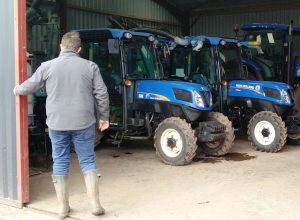
 Anthony Snell, President of the International Blackcurrant Association since June 2016, opens the doors of his farm for us.
Anthony Snell, President of the International Blackcurrant Association since June 2016, opens the doors of his farm for us.
Professionalism, perfection and experience in Herefordshire, UK.
Visited in March 2017
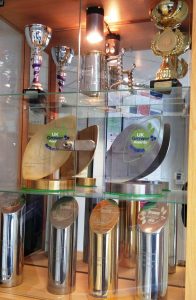
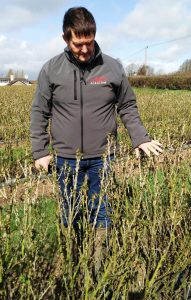 The first impression of a visitor at Windmill Hill in Western England will be “WOW”. And it will also be the last impression, after having a deep look into Anthony Snell’s business. As it proudly shows on banners, Windmill Hill is where you will get the “berry” best from Herefordshire.
The first impression of a visitor at Windmill Hill in Western England will be “WOW”. And it will also be the last impression, after having a deep look into Anthony Snell’s business. As it proudly shows on banners, Windmill Hill is where you will get the “berry” best from Herefordshire.
For many years, Anthony Snell and his wife Christine have been running the family business in beautiful hilly and green Herefordshire. Berries are their speciality, and among these: blackcurrants. Anthony has a field manager for the strictly agronomic part of his business, but keeps an eye on everything – and knows everything about blackcurrants.
“Blackcurrant production must meet the demand of the market” says Anthony Snell
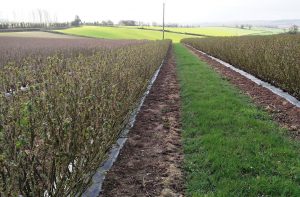 Anthony’s blackcurrant farm is of average size – and average in the UK means 70 – 100 hectares. He is one of the 8 blackcurrant growers in Herefordshire, who are part of the British Blackcurrant Foundation. The other members of the foundation, in total around 40 blackcurrant farmers in the whole United Kingdom, grow their blackcurrants for the needs of Ribena. This represents 90% of the crop in the country. Ribena, a blackcurrant based British soft drink brand owned today by Suntory, contracts the blackcurrant growing for their needs with British growers.
Anthony’s blackcurrant farm is of average size – and average in the UK means 70 – 100 hectares. He is one of the 8 blackcurrant growers in Herefordshire, who are part of the British Blackcurrant Foundation. The other members of the foundation, in total around 40 blackcurrant farmers in the whole United Kingdom, grow their blackcurrants for the needs of Ribena. This represents 90% of the crop in the country. Ribena, a blackcurrant based British soft drink brand owned today by Suntory, contracts the blackcurrant growing for their needs with British growers.
The “Ribena-system”
The contract between Ribena and the British Blackcurrant Foundation is the basis for good relationships between growers and processors. Here, the production corresponds to the needs, and everybody is happy: a certain price level is fixed approximately within a contract that lasts for seven years. Prices are, of course, adjusted after the harvest, according to the quality of the currants. But it ensures the growers to sell their currants, and it ensures Ribena good growing conditions for “their” currants.
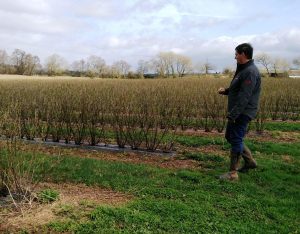
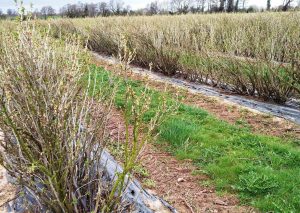
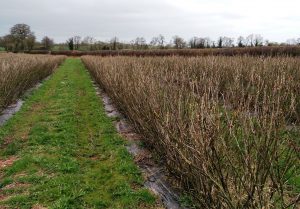
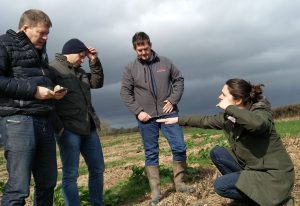
Anthony buys blackcurrant cuttings of “Ribena varieties” from a certified producer. And he only plants a certain
amount of blackcurrants, paying royalties for the amount of cuttings he plants. “Last year, I had to remove blackcurrants from some areas (variety Ben Hope), because I produced too much”, explains Anthony. Five times a year, Harriet Roberts, agronomic adviser from LRS (Lucozade Ribena Suntory), visits every farmer. Together with a newsletter that she sends twice a month, this part of the contract. It helps the growers with professional agronomic advice.
Organic blackcurrants from Windmill Hill
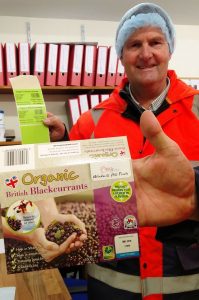
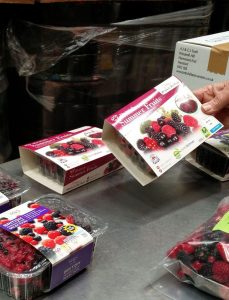 Where there is no place for “Ribena”-blackcurrants, Anthony grows organic. Blackcurrants of variety Ben Tirran represent 20% of the total area. Here, hand weeding and hand fertilizing is taking over from spraying and work with huge machines for the first 2 years of the plantation. The strict respect of organic growing methods will guarantee a good yield – which is half of the conventional yield. “In conventional growing, 7 tonnes per hectare is a good average”, says Anthony.
Where there is no place for “Ribena”-blackcurrants, Anthony grows organic. Blackcurrants of variety Ben Tirran represent 20% of the total area. Here, hand weeding and hand fertilizing is taking over from spraying and work with huge machines for the first 2 years of the plantation. The strict respect of organic growing methods will guarantee a good yield – which is half of the conventional yield. “In conventional growing, 7 tonnes per hectare is a good average”, says Anthony.
Windmill Hill sells its organic blackcurrants to companies who make organic yogurts or cordial, for example. But this is not all: Anthony has his own storage and packing facilities for IQF berries – and he sells them online.
The “berry” best from Herefordshire
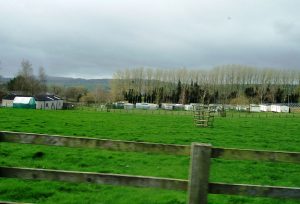
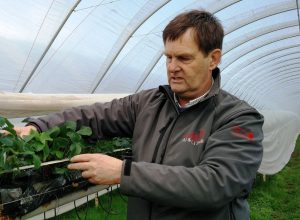 Apart from blackcurrants, Windmill Hill produces raspberries (40ha), a thousand tonnes of strawberries a year, together with some blueberries, chuckleberries and blackberries. During the harvesting season, around 300 seasonal staff join the permanent workers. They come from Bulgaria, Romania or Poland, and Anthony and Christine are very concerned by their well-being. They provide accommodation in mobile homes on the farm for some of them, and they have their football and tennis facilities for spare time activities.
Apart from blackcurrants, Windmill Hill produces raspberries (40ha), a thousand tonnes of strawberries a year, together with some blueberries, chuckleberries and blackberries. During the harvesting season, around 300 seasonal staff join the permanent workers. They come from Bulgaria, Romania or Poland, and Anthony and Christine are very concerned by their well-being. They provide accommodation in mobile homes on the farm for some of them, and they have their football and tennis facilities for spare time activities.
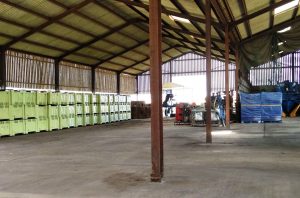
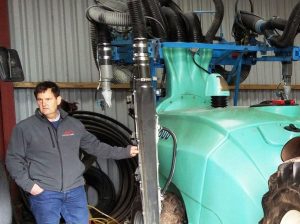
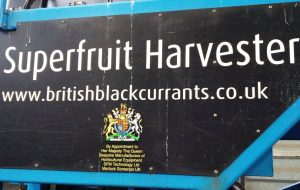 During the tour of the farm, Anthony gives some details about his blackcurrant farming. “Ben Alder is the variety which has the best yield here with 4t/acre (10t/hectare). It is a very consistent variety”, explains Anthony. “We have an average of 600mm of rain per year. When we plant cuttings, we keep them under polythene for the first 3 years. This is part of the recommendation of Ribena: it keeps weeds away and moisture in. We keep our plantations for 10 to 12 years, in general.”
During the tour of the farm, Anthony gives some details about his blackcurrant farming. “Ben Alder is the variety which has the best yield here with 4t/acre (10t/hectare). It is a very consistent variety”, explains Anthony. “We have an average of 600mm of rain per year. When we plant cuttings, we keep them under polythene for the first 3 years. This is part of the recommendation of Ribena: it keeps weeds away and moisture in. We keep our plantations for 10 to 12 years, in general.”
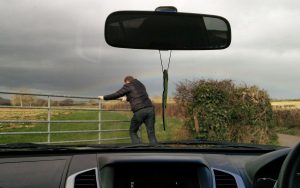 Furthermore, hedges delimit the blackcurrant fields. It is part of the environmental commitment from the Ribena growers. Hedges, flowers and wildlife are present everywhere on the farms.
Furthermore, hedges delimit the blackcurrant fields. It is part of the environmental commitment from the Ribena growers. Hedges, flowers and wildlife are present everywhere on the farms.
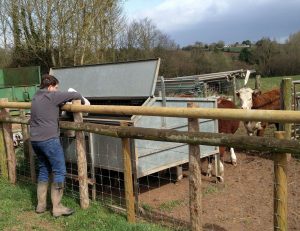 At the end of the tour, Anthony shows us his machinery. Not far from harvesting machines, tractors, sprayers and all the other farming material, some cows have their paddock. “This is Christine’s hobby”, smiles Anthony. Because even though fruits have become an expanding activity in the Western Midlands, Hereford cattle is probably still its most famous export.
At the end of the tour, Anthony shows us his machinery. Not far from harvesting machines, tractors, sprayers and all the other farming material, some cows have their paddock. “This is Christine’s hobby”, smiles Anthony. Because even though fruits have become an expanding activity in the Western Midlands, Hereford cattle is probably still its most famous export.
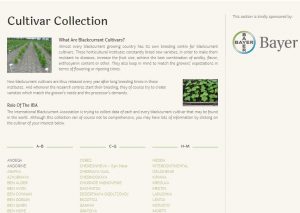 The International Blackcurrant Association has started to collect data from blackcurrant breeding centers. A collection of almost 70 commercially available blackcurrant varieties is
The International Blackcurrant Association has started to collect data from blackcurrant breeding centers. A collection of almost 70 commercially available blackcurrant varieties is 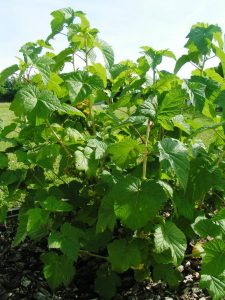
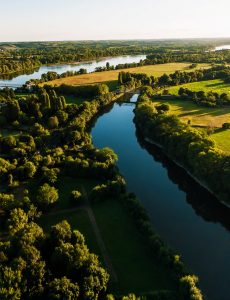
 Interestingly, Angers is not only known for its history. It is also a centre for innovation and home to many prominent companies and their research teams. The surrounding countryside hosts the vineyards of the “Aubance”, the “Anjou” and “Saumur”. And along the banks of the giant Loire river, châteaux and abbeys pay homage to the history of the region.
Interestingly, Angers is not only known for its history. It is also a centre for innovation and home to many prominent companies and their research teams. The surrounding countryside hosts the vineyards of the “Aubance”, the “Anjou” and “Saumur”. And along the banks of the giant Loire river, châteaux and abbeys pay homage to the history of the region. From Orléans to Angers, the Kings of France frequented the Loire Valley in the Middle Ages. Impressive castles (“châteaux”) are all around. This whole region is the most important region of France for horticultural production. Horticulturalists, gardeners and nursery growers produce over 1000 different varieties of plants. Among apple, pear, peach, cherry and other fruit trees, we can also find berry fields. And among these: blackcurrants – of course!
From Orléans to Angers, the Kings of France frequented the Loire Valley in the Middle Ages. Impressive castles (“châteaux”) are all around. This whole region is the most important region of France for horticultural production. Horticulturalists, gardeners and nursery growers produce over 1000 different varieties of plants. Among apple, pear, peach, cherry and other fruit trees, we can also find berry fields. And among these: blackcurrants – of course!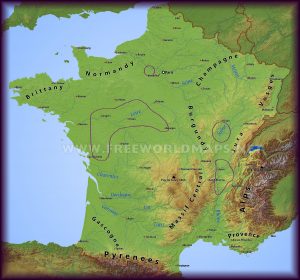 The French Black-and Redcurrant Association (ANCG) will organize the IBA Conference 2018. It had already been the host of the last French IBA conference in 2010 in Beaune (in Burgundy, Eastern France). As blackcurrants are grown in different regions of France (as you can see from the map beside), it will be interesting to have another view of French blackcurrant growing. The organizing team will not be the same. This time, the blackcurrant growers from the Loire Valley, together with the “
The French Black-and Redcurrant Association (ANCG) will organize the IBA Conference 2018. It had already been the host of the last French IBA conference in 2010 in Beaune (in Burgundy, Eastern France). As blackcurrants are grown in different regions of France (as you can see from the map beside), it will be interesting to have another view of French blackcurrant growing. The organizing team will not be the same. This time, the blackcurrant growers from the Loire Valley, together with the “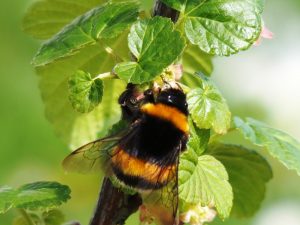
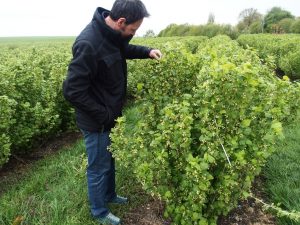
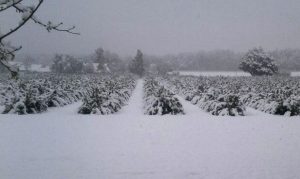 This picture has been taken by Daniel Pröbstle from Günzburg in Bavaria (Germany): a blooming blackcurrant field covered with snow! One can easily understand what this means for this year’s yield. Other German growers who were less affected still talk about at least 50% loss.
This picture has been taken by Daniel Pröbstle from Günzburg in Bavaria (Germany): a blooming blackcurrant field covered with snow! One can easily understand what this means for this year’s yield. Other German growers who were less affected still talk about at least 50% loss.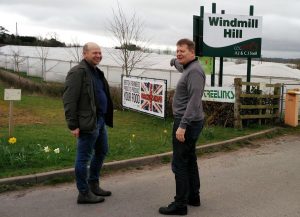
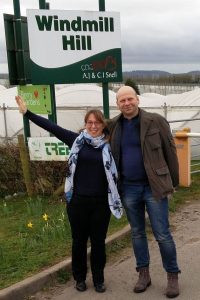

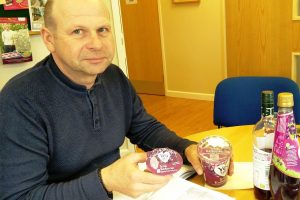
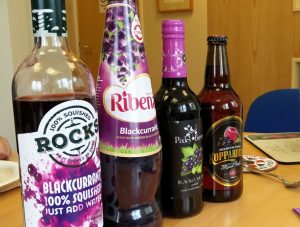


 Later on the day, Jo Hilditch, head of the British Blackcurrant Foundation, joined us in Hereford for a most delightful dinner. She is a blackcurrant grower in Herefordshire herself, and brought along her “British Cassis”. But not only this: we have had interesting discussions about Brexit, local specialities and many more…
Later on the day, Jo Hilditch, head of the British Blackcurrant Foundation, joined us in Hereford for a most delightful dinner. She is a blackcurrant grower in Herefordshire herself, and brought along her “British Cassis”. But not only this: we have had interesting discussions about Brexit, local specialities and many more…
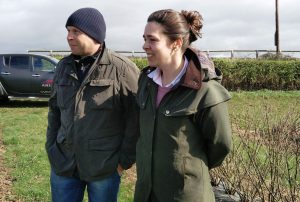
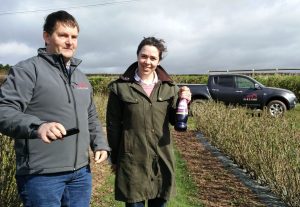
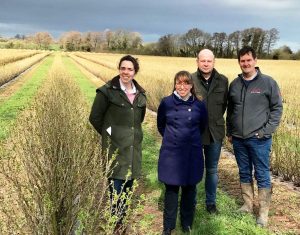
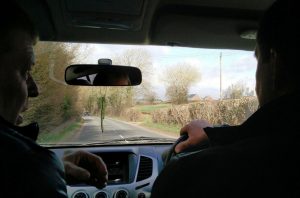
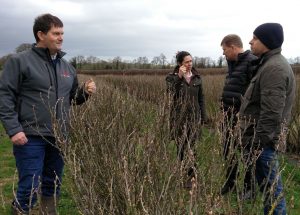
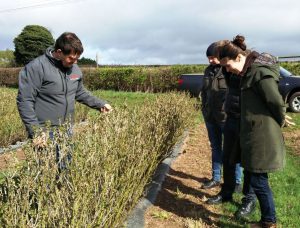
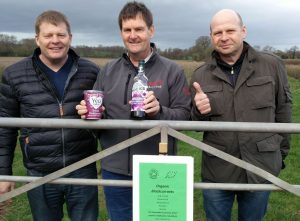
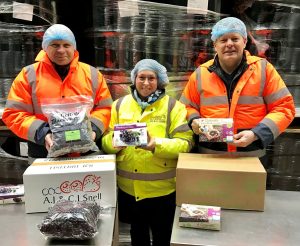
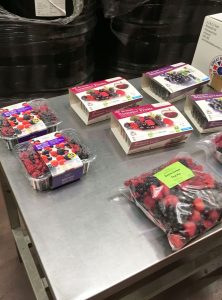
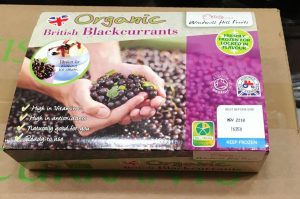
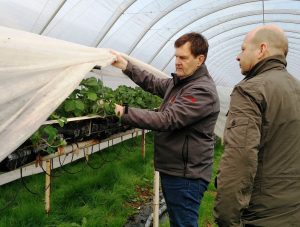
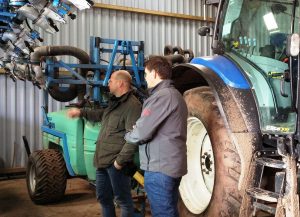
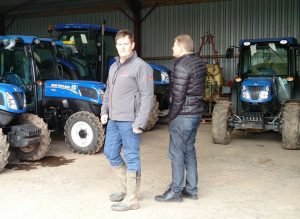
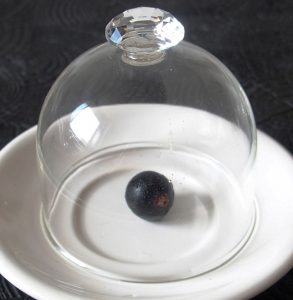 Everything has not yet been decided – but a few things are certain:
Everything has not yet been decided – but a few things are certain:
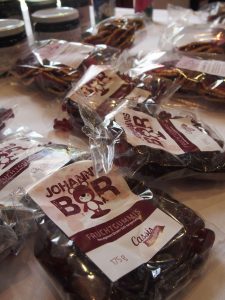
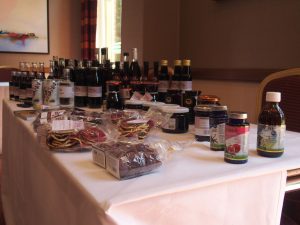
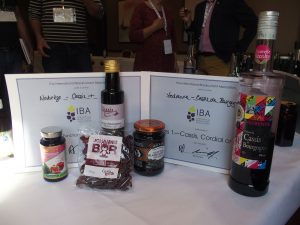
 1st Blackcurrant Smoothie Contest in Nuits-Saint-Georges (France)
1st Blackcurrant Smoothie Contest in Nuits-Saint-Georges (France)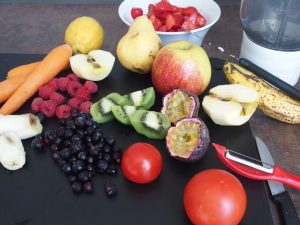 We have therefore decided to organize a smoothie contest. Because smoothies are healthy, in fashion everywhere, perfect for a hot summer day. And perfect also for sportspeople. Many of you know already that blackcurrants have wonderful effects on sportspeople’s performance. Blackcurrants reduce muscle fatigue, increase fat burning and improve recovery after exercise. These are already enough reasons to combine
We have therefore decided to organize a smoothie contest. Because smoothies are healthy, in fashion everywhere, perfect for a hot summer day. And perfect also for sportspeople. Many of you know already that blackcurrants have wonderful effects on sportspeople’s performance. Blackcurrants reduce muscle fatigue, increase fat burning and improve recovery after exercise. These are already enough reasons to combine 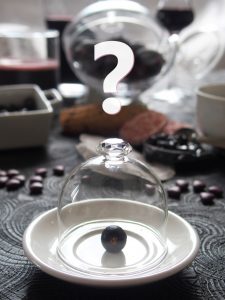
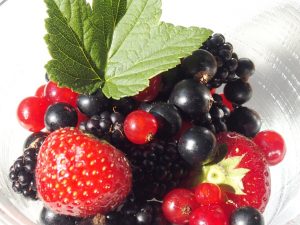 Another concern is: how can people cook with blackcurrants, if they cannot find them in the market? Where are dried blackcurrants? Or a fruit mix for the preparation of smoothies? Or simply: frozen blackcurrants – which are mostly unavailable in many countries…. W
Another concern is: how can people cook with blackcurrants, if they cannot find them in the market? Where are dried blackcurrants? Or a fruit mix for the preparation of smoothies? Or simply: frozen blackcurrants – which are mostly unavailable in many countries…. W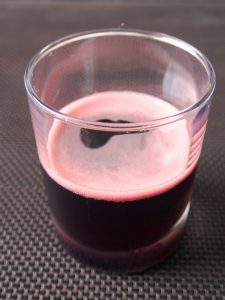 Yes, blackcurrants mainly go into the production of juices. And therefore, the biggest part of the yields ends up as blackcurrant concentrate. We are now launching a blackcurrant smoothie contest, but the smoothies have to be made with concentrate, because nothing much else is available. And even if people like our blackcurrant smoothies, how can they make it themselves – without blackcurrants? They will not find concentrates or purees, no frozen blackcurrants, and not even pure juice (without water and added sugar) – just a few blackcurrants during the 3 weeks of harvesting.
Yes, blackcurrants mainly go into the production of juices. And therefore, the biggest part of the yields ends up as blackcurrant concentrate. We are now launching a blackcurrant smoothie contest, but the smoothies have to be made with concentrate, because nothing much else is available. And even if people like our blackcurrant smoothies, how can they make it themselves – without blackcurrants? They will not find concentrates or purees, no frozen blackcurrants, and not even pure juice (without water and added sugar) – just a few blackcurrants during the 3 weeks of harvesting.